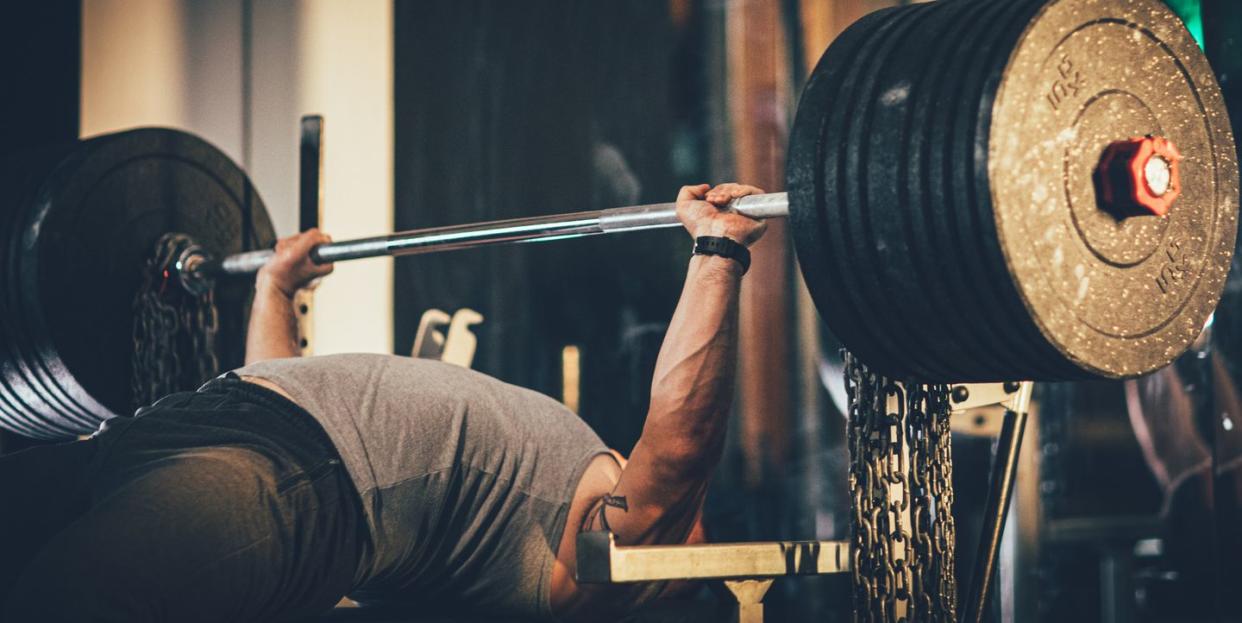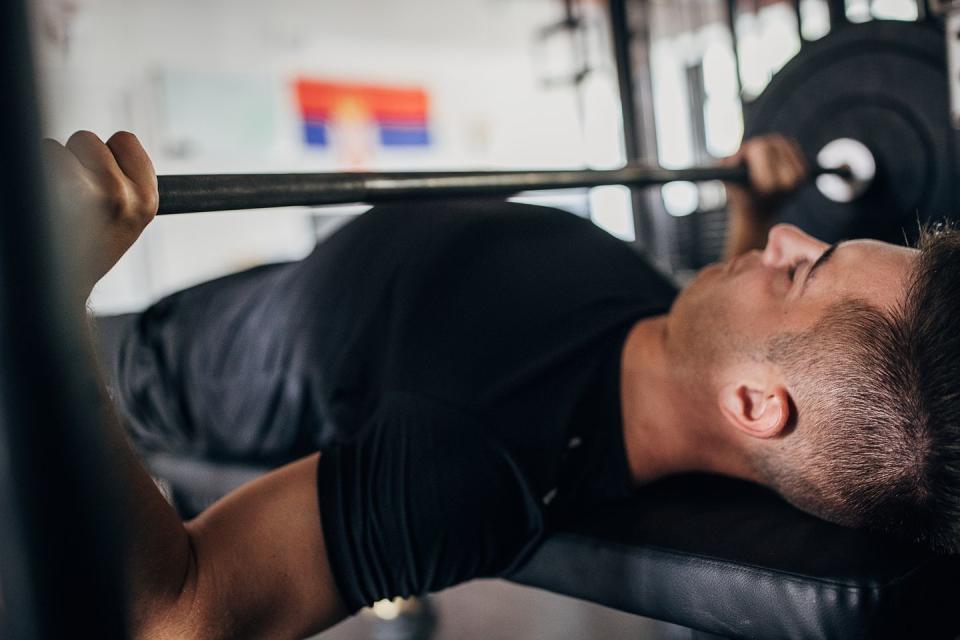Should We Bench Press with an Arched Back? Here's What the Research Says

Evoking the wrath of keyboard warriors with a penchant for powerlifting far and wide, the debate around flat vs arched back bench presses is undoubtedly a keen topic of discussion. For the uninitiated, whether to bench press with an arched back or flat back frequently causes a stir on social media due to the mixed evidence on the matter we have available. But that may be about to change.
New evidence may have shed some light on the answer. Here, we break down the science and give you the TL;DR with our MH verdict.
The Study
The study, which was published in The Journal of Strength & Conditioning Research, compared the flat back and arched back bench press techniques and the impact they both had on various performance markers among power athletes.
15 experienced resistance trained participants (mostly powerlifting athletes) took part in the study, 13 men and 2 women.
They visited the lab for three separate training sessions. During the first two sessions, they performed a one repetition max (1RM) test using either the flat back or arched back bench press.
Each participant completed two warm up sets before the 1RM test. The 1RM test involved performing sets of a single rep with the weight increasing until failure. Each set was separated by three minutes of rest.
After testing the 1RM for both techniques, the participants then performed bench press sets at 50%, 70%, and 90% of their 1RM using both the flat back and arched back techniques. This resulted in a total of six sets per participant.
The flat back technique required five points of contact to the bench: head, shoulder blades, thoracic trunk, buttocks, and feet, without arching the lower back. The arched back technique involved arching the lower back as much as possible while maintaining the same points of contact.
Stats were analysed after collecting results via EMG (electromyography) to compare the differences between the flat back and arched back techniques for various parameters, such as: 1RM, barbell displacement (movement of the barbell), velocity, power, and muscle activation.
The Results
The arched back bench press technique resulted in a greater 1RM compared to the flat back technique.
The flat back technique led to greater barbell displacement at all loads tested.
The flat back bench press technique showed greater barbell velocity at 50% 1RM.
No significant differences were observed in power between the two techniques across all weights.
There were no significant differences in the activation of the upper and lower pec muscles between the flat back and arched back techniques.
There was a trend for increased triceps activation with the arched back technique.
The Conclusion
The study concluded that both flat back and arched back bench press techniques have their advantages depending on training goals. The arched back technique allows for a greater 1RM, likely due to the reduced range of movement, making it suitable for situations where lifting heavier loads is the primary goal like powerlifting.
However, the flat back technique showed higher barbell velocity at lighter loads, which may be beneficial for improving explosive strength. Both techniques caused similar muscle activation of the pec muscles, while the arched back technique showed a trend for greater triceps activation.
The findings suggest that incorporating both flat back and arched back bench press techniques into training programmes can provide a well rounded approach to developing upper body strength and power.

The Verdict
We can choose between the two techniques depending on our training goals and preferences. For example, along with this study, further evidence suggests that those who enter into powerlifting competitions may arch their back more in order to achieve higher numbers.
However, an increased stretch across the chest and improved range of movement could lead to more muscular gain. So if your goals are to gain more muscle mass, then perhaps less of an arch would be more suitable.
To get the best of both worlds, you could arch the back a little – e.g. not as pronounced as the powerlifting technique – while keeping the trunk locked and stable and getting a big as possible stretch across the pecs with the elbows nice and low. This can also help reduce the pressure on the shoulder joints. Ultimately, choose the technique that feels right for your body, that you get the best results from, in line with your training goals.
The Research
If you'd like to read more about the science cited in this article, here are the references:
Differences in the one-repetition maximum and load-velocity profile between the flat and arched bench press in competitive powerlifters - https://www.tandfonline.com/doi/10.1080/14763141.2018.1544662
Flat-Back vs. Arched-Back Bench Press: Examining the Different Techniques Performed by Power Athletes - https://journals.lww.com/nsca-jscr/fulltext/9900/flat_back_vs__arched_back_bench_press__examining.422.aspx
Vertical and horizontal barbell kinematics indicate differences in mechanical advantage between using an arched or flat back posture in the barbell bench press exercise - https://journals.sagepub.com/doi/abs/10.1177/1747954120982954
Physiology of Stretch-Mediated Hypertrophy and Strength Increases: A Narrative Review - https://link.springer.com/article/10.1007/s40279-023-01898-x
Effects of range of motion on muscle development during resistance training interventions: A systematic review - https://www.ncbi.nlm.nih.gov/pmc/articles/PMC6977096/
You Might Also Like


